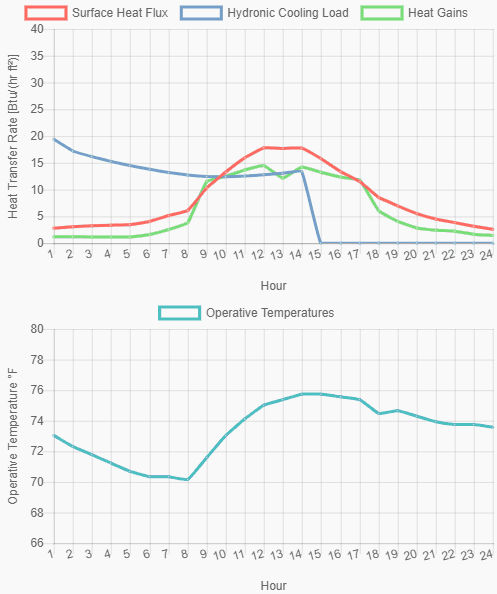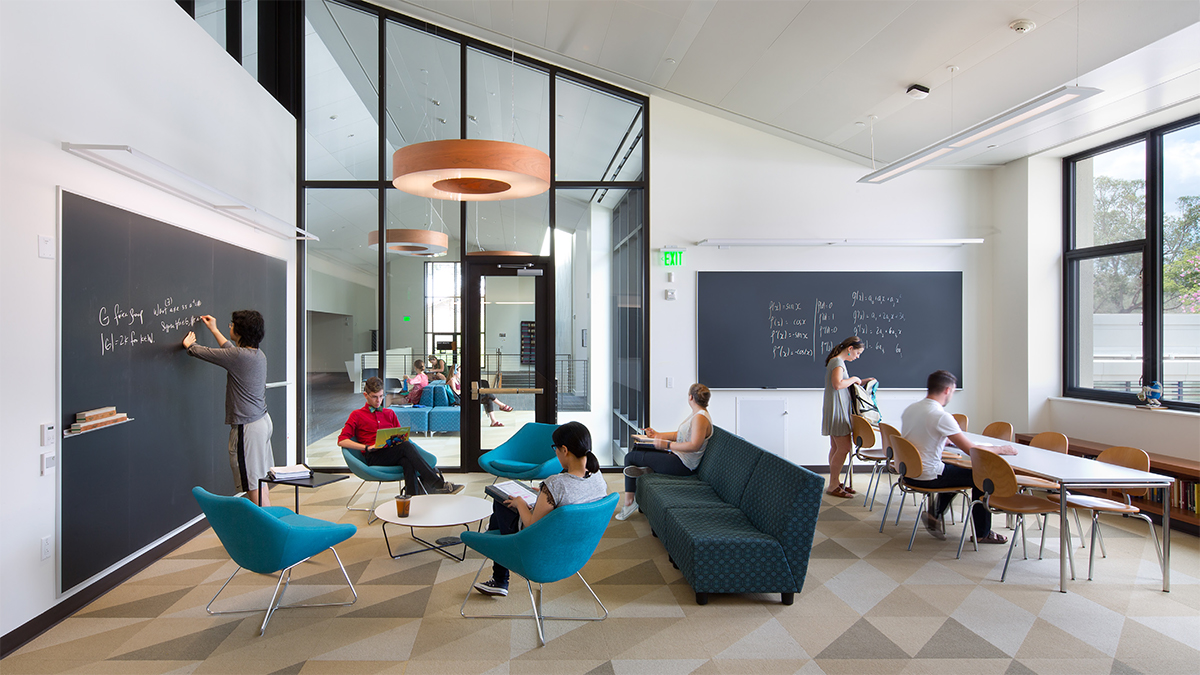CBE has released an interactive web-based tool for the early phases of design of high thermal mass radiant systems. The tool has been designed for engineering professionals and others who need to accurately and quickly estimate the performance of these systems, which have hydronic tubing embedded in the structural slab, or in a concrete topping slab. The CBE Rad Tool is available online at http://radiant.cbe.berkeley.edu/ and information about this reearch is on CBE’s website here.

Animation of dynamic tool results shows the impact of shifting the time of operation (top chart) on operative temperature (bottom).
The online tool may be used to predict steady-state conditions for both heating and cooling modes, greatly facilitating a standard design practice. However it can also predict dynamic (transient) performance for cooling, taking into account the effects of changing loads and the effects of thermal mass of the building structure. To create the dynamic capability, CBE’s research team conducted 2.5 million EnergyPlus simulations of a summer cooling design day. The research team used regression analysis to extend these simulations to a wide range of combinations of design and operation parameters a user may want to study. The development of the tool was led by PhD candidate Carlos Duarte and Researcher Paul Raftery.
Project Scientist Fred Bauman notes that the tool was designed with extensive feedback from CBE’s industry partners, “We had online meetings with the technical advisory group, and demonstrated the tool at two CBE meetings, to make sure that it provides the answers that they are seeking. It allows a designer to look at how the systems work under a range of control systems, for example you can see the effect of precooling at night or early morning, that enables the primary cooling system to be turned off during the day, and avoiding the high peak demand charge, storing the cooling in the slab. Also, cooling systems are more efficient at night with lower temperatures, and this tool allows people to check this, without running an entire simulation.”
High thermal mass radiant systems respond slowly to control changes, so control actions must happen well in advance (often several hours) of any noticeable thermal effects in the space. The CBE Rad Tool’s dynamic capability is useful as it allows users to estimate and plan the start times and durations of operation, and to properly calculate the space and hydronic plant heat extraction rates. The research team also posted detailed help page with details for expert users, noting the methods and assumptions used to develop the tool.
Featured image: Pomona College Millikan Science Building, one of CBE’s radiant systems case studies and a 2018 Livable Buildings Award Honorable Mention. Credits: Architecture by EHDD, MEP by Integral Group, Photograph by Jim Simmons.

